
Overtaking according to traffic rules - how is this maneuver performed?
Content
When a person behind the wheel knows how to correctly overtake, overtake, pass oncoming traffic and other maneuvers, he confidently drives a car and rarely gets into an accident.
Content
- 1 The concept of overtaking - how does it differ from overtaking?
- 2 When is overtaking illegal?
- 3 When can you overtake?
- 4 Signs signaling the impossibility of overtaking
- 5 Double overtaking and overtaking of the column - what is it?
- 6 A few words about the oncoming siding
The concept of overtaking - how does it differ from overtaking?
The rules of the road (SDA), which were clarified and supplemented once again in 2013, tell us that the term "overtaking" means a detour of several or one car, which implies a short exit of the overtaking vehicle into the oncoming lane and returning it back. The traffic rules of 2013 clearly state that far from any advance is considered overtaking. But every overtaking is essentially an advance.
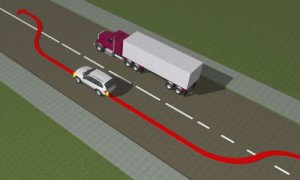
Let's take a look at the difference between overtaking and overtaking. First of all, let's clarify what concept the rules put into the term "leading". Everything is simple here. Leading is a car driving at a speed greater than the speed of passing vehicles. In other words, when your car is moving at high speed in the area of the right half of the highway or without crossing the markings within the same lane, we are talking about the lead.
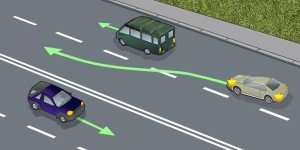
It is immediately clear that the difference between advancing and overtaking is clear to everyone. In the first case, according to the SDA 2013, the exit to the "oncoming lane" is not provided. But when overtaking, the driver can drive into the oncoming lane and, after performing the intended maneuver, be sure to return back.
When is overtaking illegal?
In accordance with the SDA 2013, before overtaking, you should make sure that when performing this maneuver, other road users will not create any obstacles, and make sure that there is no sign prohibiting the maneuver (3.20). The person behind the wheel must analyze the traffic situation, choose a safe distance for overtaking, and only after that “bypass” passing vehicles. Moreover, it is very important to make sure that there are no cars in the oncoming lane.
Overtaking is prohibited in the following cases:
- a car moving ahead in the same lane as the car that plans to overtake signals that its driver wants to turn left;
- the car in front performs a detour of any obstacle or overtaking;
- overtaking began the car following your car.
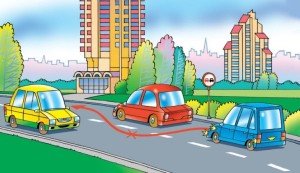

Overtaking is also prohibited when the driver realizes that after the completion of the planned maneuver, he will not be able to safely return to his lane. From the point of view of elementary common sense, all these prohibitions look completely justified. Each of the motorists is well aware that this is exactly how you need to behave on the road, taking care of the safety of traffic on it.
Now let's remember those places on highways where overtaking is prohibited at all. These in SDA 2013 include the following sections of the road:
- flyovers, viaducts, bridges and spaces under these engineering structures;
- pedestrian crossings;
- regulated intersections;
- dangerous turns and final sections of climbs;
- intersections without traffic lights or traffic controllers (overtaking is prohibited in cases where the car is not driving along the main road);
- areas where there is limited visibility;
- tunnels;
- crossings over the railway track (the maneuver described in the article is also prohibited less than a hundred meters before such crossings).
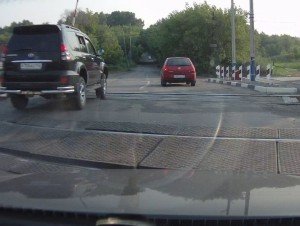

The rules, approved in 2013, indicate that the driver behind the wheel of an overtaken car is prohibited from increasing speed while another vehicle is “bypassing” it, or otherwise preventing the overtaking driver from starting and completing his planned maneuver.
Moreover, in situations where a low-speed car (for example, a truck) is moving along the road, traffic rules require that it assist the car coming behind in overtaking (completely stopped or passed to the right). This rule applies when driving outside settlements. By the way, it is also true for cases of advancing vehicles, and not just overtaking them.


Watch this video on YouTube
When can you overtake?
A novice driver may ask in bewilderment about the situations in which overtaking is allowed. It may seem to him that the rules are very strict on motorists who want to overtake other road users, and practically do not give them the opportunity to safely overtake without violating the requirements of traffic rules 2013.
In fact, the maneuver described in this article on the road is considered among experts to be the most dangerous of all types of maneuvers, which, if performed incorrectly, can lead to catastrophic consequences. Therefore, traffic rules so strictly regulate all the actions of a driver who decides to overtake (advance, oncoming traffic).
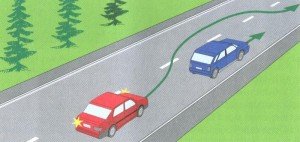

It is not difficult to remember the areas where this maneuver is allowed. The 2013 Traffic Rules allow overtaking on:
- two-lane highways, where the center line is made with intermittent markings;
- roads with three lanes, on which intermittent longitudinal marking lines are applied;
- roads with two lanes and combined markings.


Let's repeat. You should be as responsible as possible for each of your decisions to bypass vehicles in any of the indicated (permitted) cases. The price of a mistake by a driver who failed to correctly analyze the traffic situation and made an unsuccessful overtaking is very high. Just watch another story about a serious accident on a local TV channel in the evening, and you will understand that in many cases it is caused by the fact that the driver responsible for it does not have a clue about the terms of advancing or overtaking.
Signs signaling the impossibility of overtaking
SDA 2013 contains information about all types of road markings and signs that help drivers identify areas where overtaking maneuvers are prohibited. A faithful assistant to a reckless motorist, warning him against unreasonable actions, is crossing the road for pedestrians.
As mentioned, it is strictly forbidden to overtake or overtake at a pedestrian crossing. And this means that, having seen the "zebra", the driver must immediately forget about his desire to quickly get to the place he needs. Please note that maneuvers at a pedestrian crossing are prohibited both when there are people crossing the road on it, and in a situation where there are no pedestrians.
Here it is better to strictly follow the rules of 2013 if you do not want to be fined. Let us add that both U-turn and oncoming overtaking (its definition will be provided below) and reversing are prohibited at a pedestrian crossing. It seems that there is no need to talk about how to recognize the "zebra" and the sign denoting it.
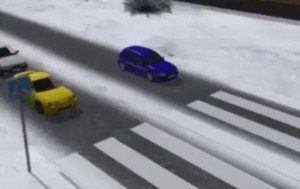

The fact that there is a pedestrian crossing ahead, any driver knows by the markings and the corresponding sign "5.19". By the way, if you are planning to travel abroad, study the road signs adopted in a particular country in advance. In many states (for example, in New Zealand, Japan, Australia and others), a pedestrian crossing is marked with signs that are very unusual for us.
Overtaking and advancing maneuvers cannot be performed on the bridge and other structures. Before entering such structures, appropriate signs are always installed (in particular, 3.20). The motorist only needs to learn the traffic rules and remember that overtaking is prohibited in such dangerous areas (on the bridge and so on). And then follow the signs and do not try to press the gas pedal all the way when he is driving over a bridge, in a tunnel, along a special overpass.
The next sign, "telling" about the impossibility of a detour in front of a moving vehicle, is a black triangle of road elevation with percentage numbers that determine the steepness of the route in a particular section. As mentioned, at the end of the climb, you must not overtake the car in front of your car. But advancing (remember the meaning of this term) on the rises is quite possible to produce, but on the condition that the movement is carried out on a two-lane road, and not a single-lane road.


So, we memorized the signs that indicate the impossibility of overtaking on bridges and at the end of climbs. And now let's refresh in memory a few more signs installed in front of the railway. moving (1.1–1.4). They may depict a smoking train, a red cross, several red inclined stripes (from one to three) or a black fence.
A sign with a steam locomotive and a fence is placed 150–300 meters before the crossing if they are outside cities and villages, and 50–100 meters within settlements. When you see these signs, immediately forget about overtaking maneuvers!
As you can see, road signs installed before entering a bridge, overpass, railway crossing and other structures potentially dangerous for traffic help vehicle drivers not to commit rash acts and unnecessary maneuvers.


Watch this video on YouTube
Double overtaking and overtaking of the column - what is it?
Most motorists are well aware that double overtaking is prohibited in our country. However, no one can say exactly what is hidden under this term. And it is not surprising, because the concept of "double overtaking" is not spelled out in the traffic rules. It simply does not exist! But there is clause 11.2, which clearly states: you cannot overtake a car in front if its driver himself overtakes a vehicle driving in front of his car.
Even experienced drivers often have problems with traffic police inspectors associated with double overtaking. Especially in cases where a motorist is trying to make a detour of several cars in front of him according to a scheme colloquially called a “train”. Let's say there are two vehicles in front of your car that are not trying to carry out any maneuvers. Is it possible to bypass them (in this case double)? There is no definite answer, therefore, in order not to become a violator, it is better not to try to make a double overtaking, as it can cause an accident.
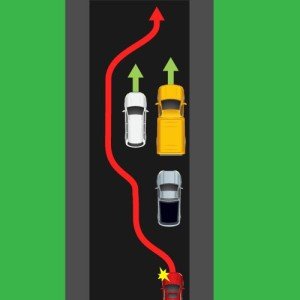

And now let's consider the rules by which an organized column of cars is overtaken. The concept of such a column includes cars moving with a special accompanying car (it drives with a red and blue beacon in front and at the same time emits sound signals). Moreover, in an organized column there must be at least three vehicles.


According to the rules of traffic on the roads of our country, it is strictly forbidden to overtake organized transport columns. Always keep this in mind when you have the urge to do so. For being ahead of the convoy with the accompanying car, you will undoubtedly be punished, and for a very “tidy” sum.


Watch this video on YouTube
A few words about the oncoming siding
On domestic, far from ideal highways, sometimes there are unexpected narrowings of the road due to some kind of obstacle that has formed due to unexpected reasons (it can be a broken car, roadworks, and similar situations). On roads with several lanes on one side, such obstacles do not cause problems. The driver can easily go around them without leaving the oncoming lane.
But on a two-lane highway, the difficulty that has arisen cannot be solved so easily. If you try to go around an obstacle on the side of the road, you will be fined. It turns out that it is necessary to direct your car to the oncoming lane, making an oncoming pass of interest to us with vehicles moving in the opposite direction. The basic rule of such a passing is as follows: a car entering the "oncoming lane" must give way to a vehicle that is moving in its own lane.



